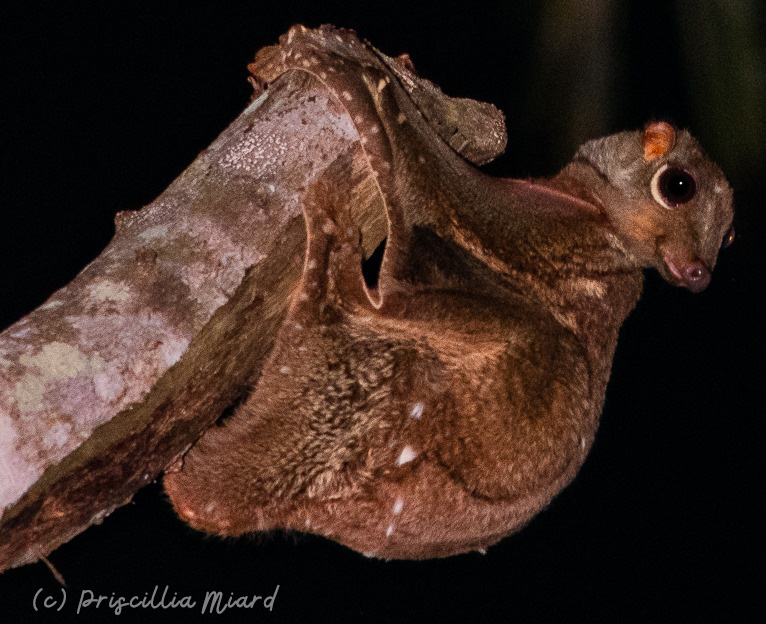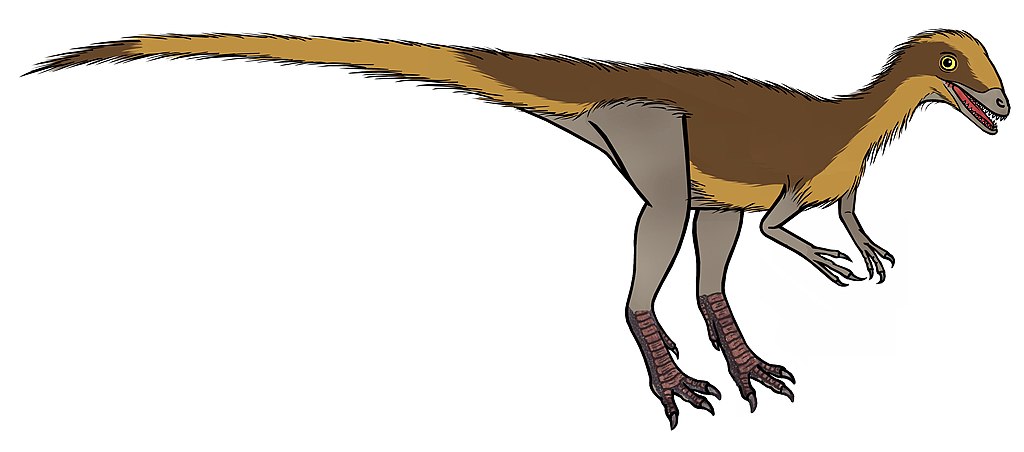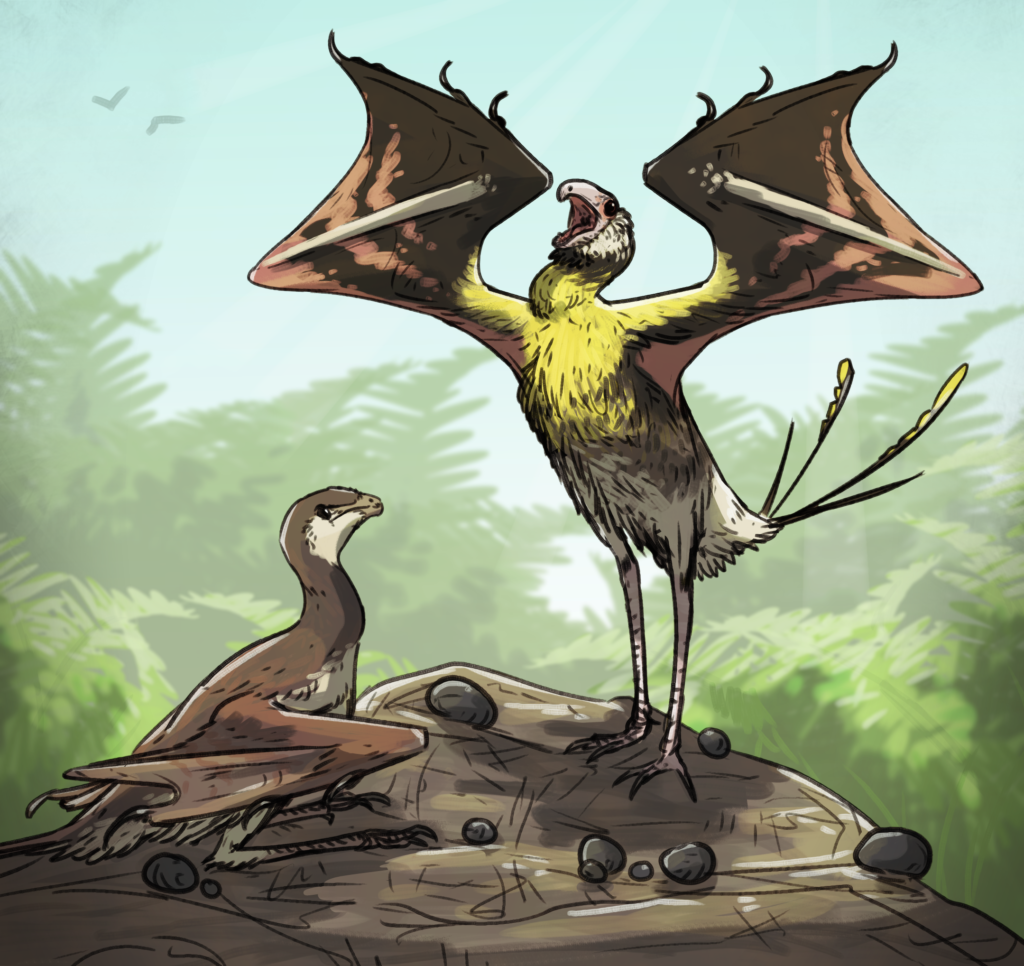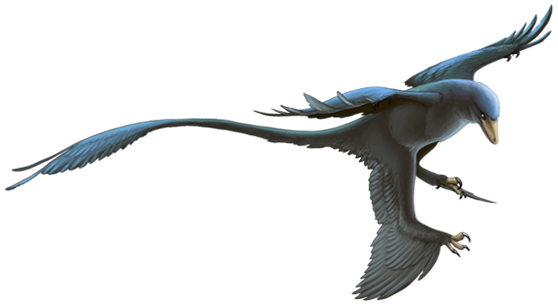In the vast tapestry of Earth’s prehistoric life, few creatures capture our imagination like dinosaurs. For over 165 million years, these remarkable animals dominated terrestrial ecosystems, evolving into countless forms that occupied virtually every ecological niche. While we’re familiar with the terrestrial giants and the pterosaurs that conquered the skies, a fascinating evolutionary question emerges: could non-avian dinosaurs have potentially evolved gliding or soaring abilities similar to modern bats? This article explores this intriguing possibility, examining the evidence, constraints, and evolutionary pathways that might have led to gliding dinosaurs beyond the avian lineage that eventually gave rise to birds.
The Evolutionary Context of Flight in Vertebrates

Flight has evolved independently in vertebrates at least four times – in pterosaurs, birds, bats, and various gliding mammals. Each group developed different anatomical solutions to the challenge of becoming airborne. Pterosaurs evolved flight membranes supported by an elongated fourth finger, while birds developed feathered wings with modified forelimbs. Bats evolved wings consisting of skin membranes stretched between elongated fingers, the body, and the hind limbs. These diverse approaches demonstrate that vertebrate flight is not a singular evolutionary pathway but can emerge through multiple anatomical adaptations. This evolutionary flexibility suggests that under the right selective pressures, dinosaurs might have evolved gliding capabilities through mechanisms distinct from the feathered wings of birds.
Anatomical Prerequisites for Gliding

Successful gliding requires specific anatomical features that allow an animal to generate lift and control its aerial trajectory. These typically include some form of airfoil surface to create lift, a favorable weight-to-surface area ratio, and limb adaptations that can control the shape and angle of the gliding surfaces. In modern gliders like flying squirrels, sugar gliders, and colugos, we see skin membranes (patagia) stretched between limbs, providing the necessary surface area. The body must also be relatively lightweight, often with adaptations like hollow bones or reduced body mass. For dinosaurs to have evolved gliding abilities, they would have needed to develop similar adaptations while working within the constraints of their existing body plans and evolutionary trajectories.
Small Theropods: The Most Likely Candidates

Among dinosaurs, small theropods represent the most plausible candidates for evolving gliding adaptations. These bipedal, often agile dinosaurs already possessed several pre-adaptations that could facilitate aerial capabilities. Many small theropods had relatively lightweight skeletons with hollow bones, a feature that later proved crucial for their avian descendants. Their forelimbs were often well-developed and potentially capable of supporting membrane structures. Some small theropods also exhibited climbing abilities, which would have provided the elevated positions necessary for effective gliding. The proximity of small theropods to the evolutionary line that produced birds further suggests they possessed the genetic flexibility to develop flight-related adaptations, even if through different anatomical structures than feathered wings.
Evidence from Yi qi and Ambopteryx: Membrane-Winged Dinosaurs

Remarkably, we have discovered dinosaurs that actually did evolve membrane-based gliding structures similar to bats. Yi qi and Ambopteryx longibrachium, two small theropods from the Late Jurassic of China, represent extraordinary examples of non-avian dinosaurs that evolved bat-like wings. These scansoriopterygid dinosaurs possessed a highly elongated third finger that appears to have supported a membrane wing structure, fundamentally different from the feathered wings of birds. Fossilized impressions suggest these membranes stretched between the elongated fingers, the body, and possibly the hind limbs. These discoveries provide concrete evidence that at least some dinosaur lineages experimented with membrane-based aerial adaptations, convergently evolving structures reminiscent of those seen in modern bats and flying squirrels.
The Role of Feathers in Pre-Flight Adaptations

While membrane wings represent one potential pathway to gliding, the evolution of feathers opened another avenue for dinosaurs. Initially evolving for insulation or display rather than aerodynamics, feathers provided theropod dinosaurs with pre-adaptations that could be co-opted for gliding. Even simple, filamentous proto-feathers could have increased drag or slightly extended the effective surface area of limbs, potentially offering marginal advantages in slowing descent or extending leaps. More complex feathers with asymmetrical vanes evolved in some non-avian theropods, suggesting potential aerodynamic functions before true powered flight emerged. This demonstrates how existing structures can be repurposed through evolution to serve new functions, potentially providing multiple pathways to aerial capabilities among different dinosaur lineages.
Ecological Niches That Might Favor Gliding

For gliding adaptations to evolve, dinosaurs would have needed to inhabit environments where such abilities conferred significant advantages. Arboreal or cliff-dwelling lifestyles typically provide the strongest selective pressures for gliding, as the ability to move through air offers efficient locomotion between elevated points without descending to the ground. Late Jurassic and Cretaceous forests would have provided ample opportunities for small dinosaurs to exploit canopy environments where gliding confers advantages. Predator avoidance represents another potential driver, as gliding offers a rapid escape mechanism from terrestrial threats. Resource exploitation in three-dimensional forest environments might also have favored the ability to move efficiently between different vertical levels. These ecological factors could have created selection pressures favoring proto-gliding adaptations in certain dinosaur lineages.
Biomechanical Constraints and Possibilities

The evolution of gliding abilities would have faced significant biomechanical constraints determined by dinosaurs’ existing body plans. Larger dinosaurs would have struggled with the square-cube law, which dictates that as an animal’s size increases, its mass grows faster than its surface area, making flight increasingly difficult. The typically robust theropod skeleton would need substantial modifications to support aerial locomotion, including weight reduction and reinforcement of attachment points for any gliding membranes. The existing musculature would also need to adapt to control novel gliding structures. However, the remarkable diversity of dinosaur body plans suggests that at least some lineages might have overcome these constraints. The relatively small size and lightweight construction of many coelurosaurian theropods, in particular, might have made them promising candidates for evolving gliding adaptations.
Comparing with Other Gliding Vertebrates

Examining modern and extinct gliding vertebrates provides valuable insights into how dinosaurs might have evolved similar capabilities. Flying squirrels developed patagia (skin membranes) between their fore and hind limbs, allowing controlled glides between trees. Colugos evolved even more extensive membranes that include their tail, achieving glide ratios that can approach 3:1 (horizontal distance to vertical drop). Among reptiles, Draco lizards evolved extended ribs that support gliding membranes, while extinct Kuehneosaurids used elongated ribs to create primitive “wings.” These diverse examples demonstrate multiple anatomical solutions to the challenge of gliding, suggesting dinosaurs could have evolved their own unique adaptations based on their existing body plans. The convergent evolution of gliding in multiple lineages indicates the ecological value of this locomotor mode.
From Gliding to Powered Flight: A Theoretical Pathway

Gliding often represents an evolutionary precursor to powered flight, as seen in the likely progression from gliding dinosaurs to flying birds. This transition requires the development of stronger flight surfaces and, crucially, the musculature needed for active flapping. For non-avian dinosaurs to progress from theoretical gliding abilities to powered flight, they would have needed to evolve increasingly efficient airfoils and develop the specialized chest muscles that power wing strokes. The furcula (wishbone) would likely become more pronounced to support flight muscles, while the entire skeletal structure would need to balance lightness with strength. While we know this pathway was successfully followed by the lineage leading to birds, it remains an intriguing question whether other dinosaur groups might have independently begun this journey through developing initial gliding capabilities.
The Fossil Record’s Limitations

Our understanding of potential gliding dinosaurs is severely constrained by the inherent limitations of the fossil record. Soft tissue structures like gliding membranes rarely preserve, making it difficult to identify gliding adaptations in fossil specimens unless they’re associated with distinctive skeletal features. Even when soft tissues do preserve, as in the exceptional cases of Yi qi and Ambopteryx, interpretation can be challenging and sometimes contentious. Many small arboreal animals that might be most likely to evolve gliding adaptations are also the least likely to fossilize due to their delicate skeletons and habitats that often don’t favor preservation. This preservation bias means we may never know the full diversity of locomotor adaptations that evolved among dinosaurs, particularly for small-bodied species that might have been most prone to developing gliding abilities.
Why Did Bat-Like Wings Fail to Dominate?

The discovery of membrane-winged dinosaurs like Yi qi raises an intriguing question: why didn’t this bat-like wing configuration become more widespread or persist longer in dinosaur evolution? These unusual dinosaurs appear to represent a relatively short-lived evolutionary experiment rather than the beginning of a major adaptive radiation. Several factors might explain this limited success. The membrane-wing configuration may have offered less effective control or maneuverability than feathered wings, particularly for takeoff and landing. The structural requirements for supporting membrane wings might have imposed evolutionary constraints that limited their versatility. Additionally, competition with pterosaurs, which had already perfected membrane-based flight, might have restricted the ecological opportunities available for membrane-winged dinosaurs. The ultimate success of feathered wings in the avian lineage suggests this configuration provided superior adaptability and evolutionary potential.
Modern Parallels and Future Discoveries

The ongoing discovery of diverse gliding and flying mechanisms in modern animals continues to expand our understanding of what might have been possible for dinosaurs. Recent research on flying snakes, which create an airfoil with their entire body, and various gliding frogs that use webbed feet as parachutes, demonstrates the remarkable versatility of vertebrate adaptations for aerial locomotion. These modern examples suggest we should remain open to discovering unexpected flight adaptations in dinosaurs. With improved fossil detection technologies, more sophisticated biomechanical modeling, and continued discoveries from exceptional preservation sites like those in China’s Liaoning Province, our understanding of dinosaur locomotor diversity continues to expand. Future discoveries may yet reveal additional dinosaur lineages that independently evolved aerial capabilities through innovative anatomical adaptations.
The Evolutionary Significance of Dinosaur Aerial Adaptations

The question of gliding dinosaurs transcends mere curiosity, touching on fundamental principles of evolutionary biology. The independent evolution of flight or gliding in multiple dinosaur lineages would represent a spectacular example of convergent evolution, where similar selective pressures lead to analogous adaptations. The discovery of membrane-winged dinosaurs like Yi qi has already demonstrated that dinosaurs explored aerial locomotion strategies beyond the feathered-wing solution that eventually led to birds. This evolutionary experimentation illustrates how natural selection can produce remarkable innovations when ecological opportunities arise. Understanding these diverse pathways to the conquest of air provides valuable insights into evolutionary processes, showing how existing structures can be repurposed to serve entirely new functions in response to environmental challenges and opportunities.
Conclusion

The evidence suggests that yes, some dinosaurs could and did evolve gliding or soaring abilities with mechanisms similar to those seen in bats. The discoveries of Yi qi and Ambopteryx have conclusively demonstrated that membrane-winged flight structures evolved independently in at least one dinosaur lineage, separate from the feathered-wing path that led to birds. While these bat-like dinosaurs appear to represent an evolutionary side branch rather than the beginning of a major adaptive radiation, they underscore the remarkable adaptability and evolutionary potential of dinosaurs. As paleontological techniques continue to advance and new fossils come to light, we may discover even more examples of non-avian dinosaurs that took to the air through diverse evolutionary pathways. The story of dinosaur evolution continues to grow more complex and fascinating with each new discovery, reminding us that nature’s experiments in aerial locomotion were even more diverse than we once imagined.



